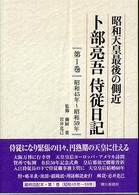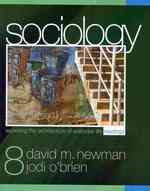- ホーム
- > 洋書
- > 英文書
- > Science / Mathematics
Full Description
Mycosynthesis of Nanomaterials: Perspectives and challenges focus on the use of diverse groups of fungi for the synthesis of inorganic (metal and metalloid) and organic nanoparticles. Such synthesis is eco-friendly, economically viable, and can be carried out at ambient temperature without the use of high temperature, pressure or toxic chemicals. It also describes different techniques used for the characterization of the nanoparticles and various hypotheses put forward to elucidate the mechanistic aspect of the synthesis by fungi.
There is a worldwide representation of eminent contributors including the US, Europe, Canada, Russia, India, Korea, Egypt, Brazil, Mexico, Colombia, Iran, and Sri Lanka. The book is interdisciplinary and essential reading for academicians.
Contents
DIFFERENT NANOPARTICLES SYNTHESIZED BY FUNGI. Using Fungi to Produce Metal/Metalloid Nanomaterials. Yeast as a Cell Factory: Biological Synthesis of Selenium Nanoparticles. Penicillium species as an Innovative Microbial Platform for Bioengineering of Biologically Active Nanomaterials. Biosynthesis of Iron Oxide Nanoparticles Using Fungi. Mycosynthesis of Chitosan Nanoparticles. Fungi-Mediated Fabrication of Copper Nanoparticles and Copper Oxide Nanoparticles, Physical Characterization and Antimicrobial Activity. Mycogenic Synthesis of Silver Nanoparticles and its Optimization. Biosynthesis of Gold Nanoparticles by Fungi: Progress, Challenges and Applications. Biosynthesis of Zinc Oxide Nanoparticles and Major Applications. Fungi-Mediated Synthesis of Carbon-Based Nanomaterials. Fungi-Based Synthesis of Nanoparticles and its Large-Scale Production Possibilities. CHARACTERIZATION TECHNIQUES OF MYCOSYNTHESISED NANOPARTICLES AND MECHANISM OF SYNTHESIS. Techniques for Characterization of Biologically Synthesized Nanoparticles by Fungi. Mechanism of Synthesis of Metal Nanoparticles by Fungi. TOXICITY OF NANOPARTICLES TO HUMAN AND ENVIRONMENT. Toxicity of Mycosynthesised Nanoparticles.







